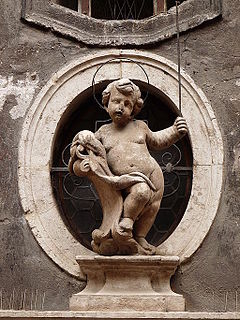 W
WBlood libel or ritual murder libel is an antisemitic canard which falsely accuses Jews of murdering Christian children in order to use their blood as part of religious rituals. Historically, these claims—alongside those of well poisoning and host desecration—have been a major theme of the persecution of Jews in Europe.
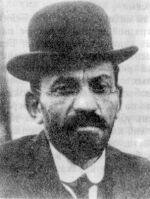 W
WMenahem Mendel Beilis was a Russian Jew accused of ritual murder in Kiev in the Russian Empire in a notorious 1913 trial, known as the "Beilis trial" or "Beilis affair". Although Beilis was acquitted after a lengthy process by an all-Slavic jury, the legal process sparked international criticism of antisemitism in the Russian Empire.
 W
WThe Blessed Bernardine of Feltre was a Friar Minor and missionary, b. at Feltre, Italy, in 1439 and d. at Pavia, 28 September 1494. He is remembered in connection with the monti di pietà of which he was the reorganizer and, in a certain sense, the founder, together with the Blessed Michele Carcano. The feast of Blessed Bernardino is kept in the Order of Friars Minor on 28 September.
 W
WCarl Donald Boström is a Swedish journalist, photographer, and writer. He is known for his writings and photography relating to the Palestinian-Israeli conflict. He has also authored several cookbooks.
 W
WThe Damascus affair of 1840 refers to the arrest of thirteen notable members of the Jewish community of Damascus who were accused of murdering a Christian monk for ritual purposes. The anti-semitic blood libel resulted in the accused being imprisoned and tortured by the Ottoman authorities and the populace attacking and pillaging a local synagogue. The affair drew widespread international attention which resulted in negotiations conducted in Alexandria from August 4 until August 28. The aftermath secured the unconditional release and recognition of innocence for the nine prisoners remaining alive and the issuing of a firman (edict) intended to halt the spread of blood libel accusations in the Ottoman Empire.
 W
WMikhail Konstantinovich Diterikhs was a general in the Imperial Russian Army and subsequently a key figure in the monarchist White movement in Siberia during the Russian Civil War.
 W
WDominguito del Val was a legendary child of Medieval Spain, who was allegedly a choirboy ritually murdered by Jews in Zaragoza (Saragossa). Dominguito is the protagonist of the first blood libel in the history of Spain – stories that grew in prominence in the 12th and 13th centuries of the Middle Ages, and contributed to antisemitic incidents. According to the legend, Dominguito was ritually murdered by Jews of Zaragoza.
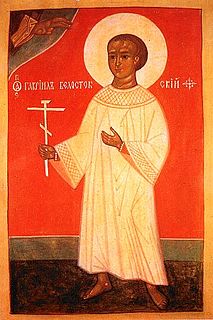 W
WSaint Gabriel of Białystok is a child saint in the Russian Orthodox Church and possibly the youngest saint. The legend of his death describes a ritual murder which has been described as a blood libel. His feast day is held on April 20.
 W
WSaint Harold was a child martyr who was falsely claimed by Benedictine monks to have been ritually murdered by Jews in Gloucester, England, in 1168. The claims arose in the aftermath of the circulation of the first blood libel myth following the unsolved murder of William of Norwich. A christian cult and veneration of Harold was briefly promoted in Gloucester, but soon died out.
 W
WThe Hilsner Affair was a series of anti-semitic trials following an accusation of blood libel against Leopold Hilsner, a Jewish inhabitant of the town of Polná in Bohemia, Austria-Hungary in 1899 and 1900. The affair achieved widespread media publicity at the time, and Tomáš Garrigue Masaryk, then professor at Charles University in Prague also got involved in the case to defend Leopold Hilsner. Hilsner spent 19 years in prison before being pardoned by the Emperor of Austria-Hungary.
 W
WThe Holy Child of La Guardia is a folk saint in Spanish Roman Catholicism and the subject of a medieval blood libel in the town of La Guardia in the central Spanish province of Toledo.
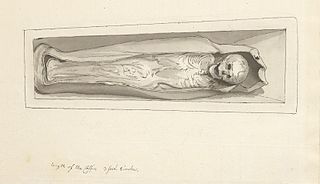 W
WHugh of Lincoln was an English boy whose death was falsely attributed to Jews. He is sometimes known as Little Saint Hugh or Little Sir Hugh to distinguish him from the adult saint, Hugh of Lincoln. The boy Hugh was never formally canonised, so properly "Little Saint Hugh" is a misnomer.
 W
WJudenstein is a district of the village Rinn, Austria. In 1671, the blood libel cult of Anderl von Rinn emerged, and a church was built around a rock where the child allegedly had been murdered.
 W
WThe Kielce pogrom was an outbreak of violence toward the Jewish community centre's gathering of refugees in the city of Kielce, Poland on 4 July 1946 by Polish soldiers, police officers, and civilians during which 42 Jews were killed and more than 40 were wounded. Polish courts later sentenced nine of the attackers to death in connection with the crimes.
 W
WThe Kraków pogrom was a violent incident that occurred on 11 August 1945 in the Soviet-occupied city of Kraków, Poland. It formed part of a period of renewed anti-Jewish violence in Poland in the aftermath of World War II. Rumors spread that Jews in the city had killed up to 80 children over the course of weeks, which led to violence against them in the Kazimierz quarter of the city and the burning of the Kupa Synagogue. At least one person was killed and an unknown number were injured.
 W
WThe Kunmadaras pogrom was an anti-Semitic pogrom that took place shortly after the Second World War in Kunmadaras, Hungary.
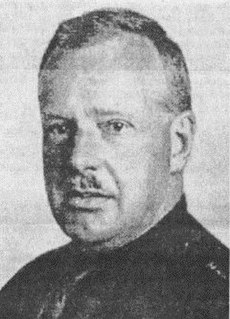 W
WArnold Spencer Leese was a British fascist politician. Leese was initially prominent as a veterinary expert on camels. A virulent anti-Semite, he led his own fascist movement, the Imperial Fascist League, and was a prolific author and publisher of polemics both before and after the Second World War.
 W
WHippolytus Lutostansky (1835–1915), also transliterated as Lutostanski, Liutostanskii, J. J. Ljutostanski, Ippolit Iosifovich Lutostanskiĭ; Polish: Hipolit Lutostański, was a former Catholic priest of Polish extraction in the Russian Empire, a convert to the Russian Orthodox Church and an antisemite.
 W
WEustace Clarence Mullins Jr. was an antisemitic American writer, propagandist, Holocaust denier, and disciple of the poet Ezra Pound. His best-known book is The Secrets of The Federal Reserve, in which he alleged that several high-profile bankers had conspired to write the Federal Reserve Act for their own nefarious purposes, and then induced Congress to enact it into law. The Southern Poverty Law Center described him as "a one-man organization of hate".
 W
WNew Martyr Archimandrite Philoumenos (Hasapis) of Jacob's Well, 15 October 1913 – 29 November 1979, was the Hegumen of the Greek Orthodox monastery of Jacob's Well, near the city of Samaria, now called Nablus (Neapolis), in the West Bank.
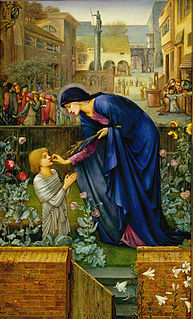 W
WThe Prioress's Tale follows The Shipman's Tale in Geoffrey Chaucer's The Canterbury Tales. Because of fragmentation of the manuscripts, it is impossible to tell where it comes in ordinal sequence, but it is second in group B2, followed by Chaucer's Tale of Sir Topas. The General Prologue names the prioress as Madame Eglantine, and describes her impeccable table manners and soft-hearted ways. Her portrait suggests she is likely in religious life as a means of social advancement, given her aristocratic manners and mispronounced French. She maintains a secular lifestyle, including keeping lap dogs that she privileges over people, a fancy rosary and brooch inscribed with "Amor vincit omnia".
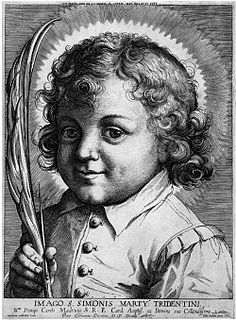 W
WThe Prozess gegen die Juden von Trient, or Trial against the Jews of Trent, was an unpublished manuscript describing the trial and execution of 18 Jews from Trent, Italy, for the murder of Simon of Trent in 1475. Commissioned in the 1470s, it came into the possession of a convent in Vienna in the 17th century and remained there until 1937, when it was purchased at auction by Lessing J. Rosenwald in order to avoid the document falling into the hands of the Nazis and being used to justify anti-semitism. After being sealed for 50 years, it was auctioned and now resides in Yeshiva University. The book consists of 614 folios and contains specific documents relating to the 1475 trial; it has been used as a source of scholarship in understanding the trial, despite difficulties in identifying the author and the variety of translation problems with the multiple languages used during the interrogation and trial itself, which are reflected in the Prozess.
 W
WVladimir Mitrofanovich Purishkevich was a right-wing politician in Imperial Russia, noted for his monarchist, ultra-nationalist, antisemitic and anticommunist views. Because of his restless behaviour, he was regarded as a loose cannon. At the end of 1916, he participated in the killing of Grigori Rasputin.
 W
WSaint Robert of Bury was an English boy, allegedly murdered and found in the town of Bury St Edmunds, Suffolk in 1181. His death, which occurred at a time of rising anti-Semitism, was blamed on local Jews. Though a hagiography of Robert was written, no copies are known, so the story of his life is now unknown beyond the few fragmentary references to it that survive. His cult continued until the English Reformation.
 W
WCathedral Basilica of the Nativity of the Blessed Virgin Mary in Sandomierz is a gothic cathedral constructed in 1360. Renovated in the baroque style in the 18th century, and received the rank of cathedral in 1818.
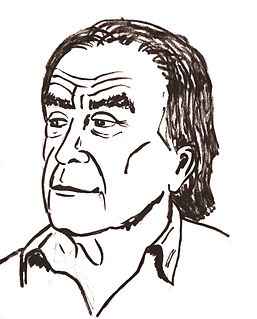 W
WGerald Anthony Scarfe, is an English cartoonist and illustrator. He has worked as editorial cartoonist for The Sunday Times and illustrator for The New Yorker.
 W
WSimon of Trent, also known as Simeon (1472–1475), was a boy from the city of Trent, in the Prince-Bishopric of Trent, whose disappearance and death was blamed on the leaders of the city's Jewish community, based on the confessions of Jews obtained under judicial torture.
 W
WJulius Streicher was a member of the Nazi Party, the Gauleiter of Franconia and a member of the Reichstag, the national legislature; he was popularly known as the "King of Nuremberg". He was the founder and publisher of the virulently antisemitic newspaper Der Stürmer, which became a central element of the Nazi propaganda machine. The publishing firm was financially very successful and made Streicher a multi-millionaire.
 W
WMustafa Abdul Qadir Tlass was a Syrian senior military officer and politician who was Syria's minister of defense from 1972 to 2004. He was part of the four-member Regional Command during the Hafez Assad era.
 W
WWerner of Oberwesel was a 16-year-old boy whose unexplained death was blamed on Jews, leading to revenge killings of Jews across Europe. He was venerated as a Christian saint, and his memorial day was 19 April.
 W
WWilliam of Norwich was an English boy whose death was, at the time, attributed to the Jewish community of Norwich. It is the first known medieval accusation against Jews of ritual murder.